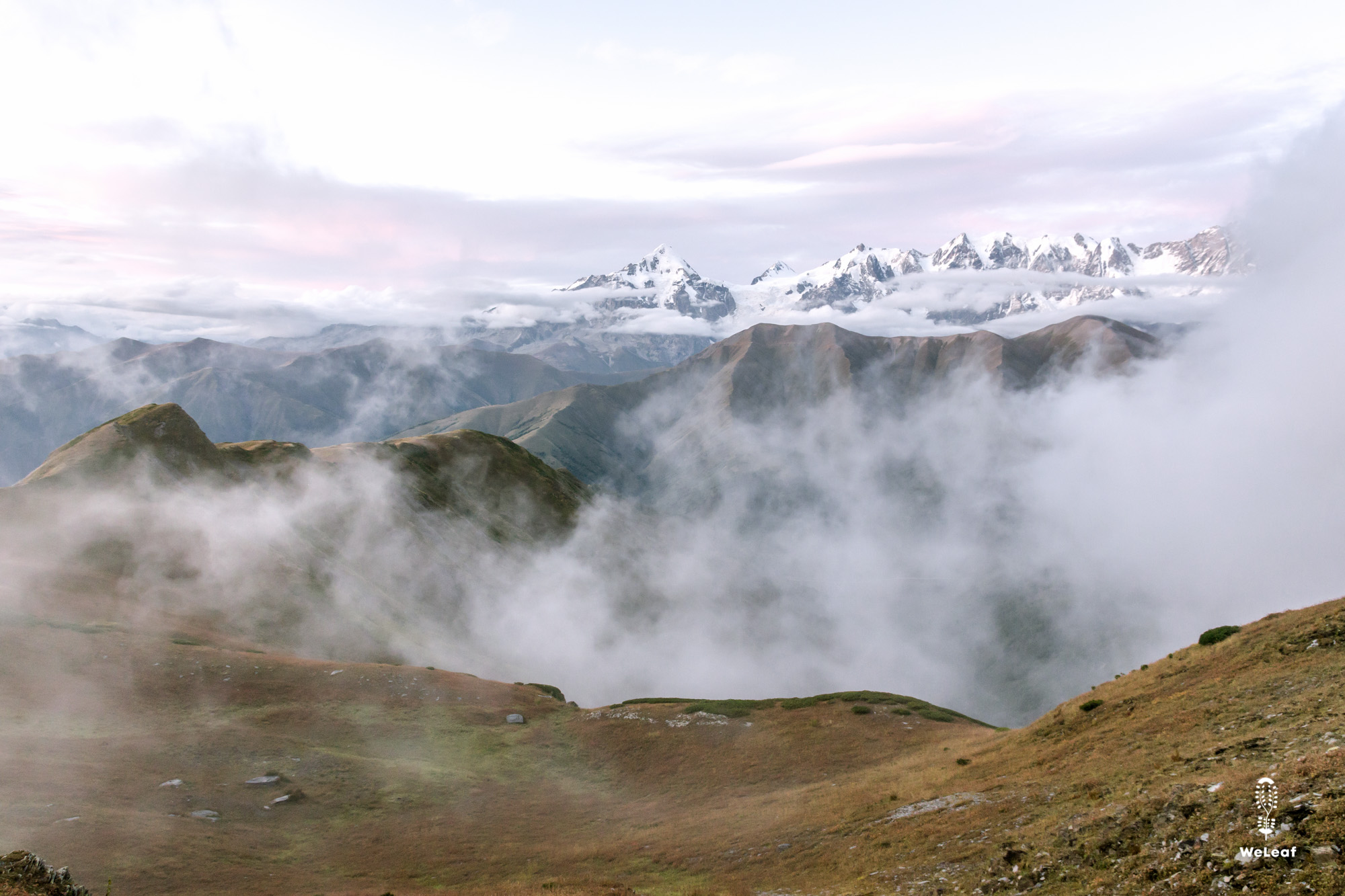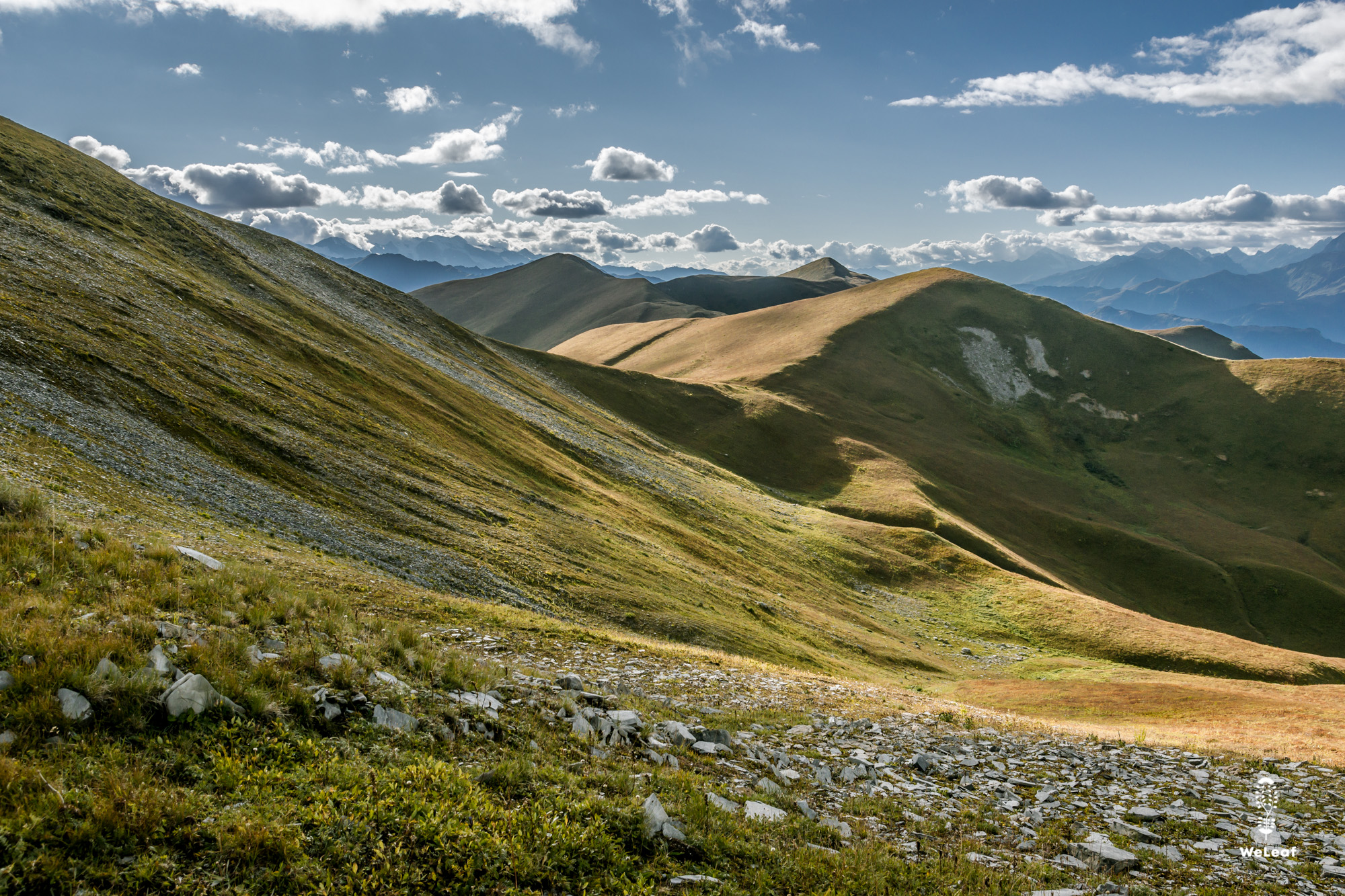
Rhododendrons

Gut feeling
October 14, 2025
Let it happen
October 17, 2025
Saturday 13th of September - Tsvirmi
We descend along the mountain ridge into a small village in the valley. Here, life is still traditional and untouched by tourism. Old men are cutting the grass short with scythes. Every five minutes, they stop to sharpen the blade. We try to memorize their movement and technique so we can attempt the same graceful rhythm when we get back home. In other fields, we see much younger men doing the same work with brushcutters. We can’t help but wonder what the old men think of that.
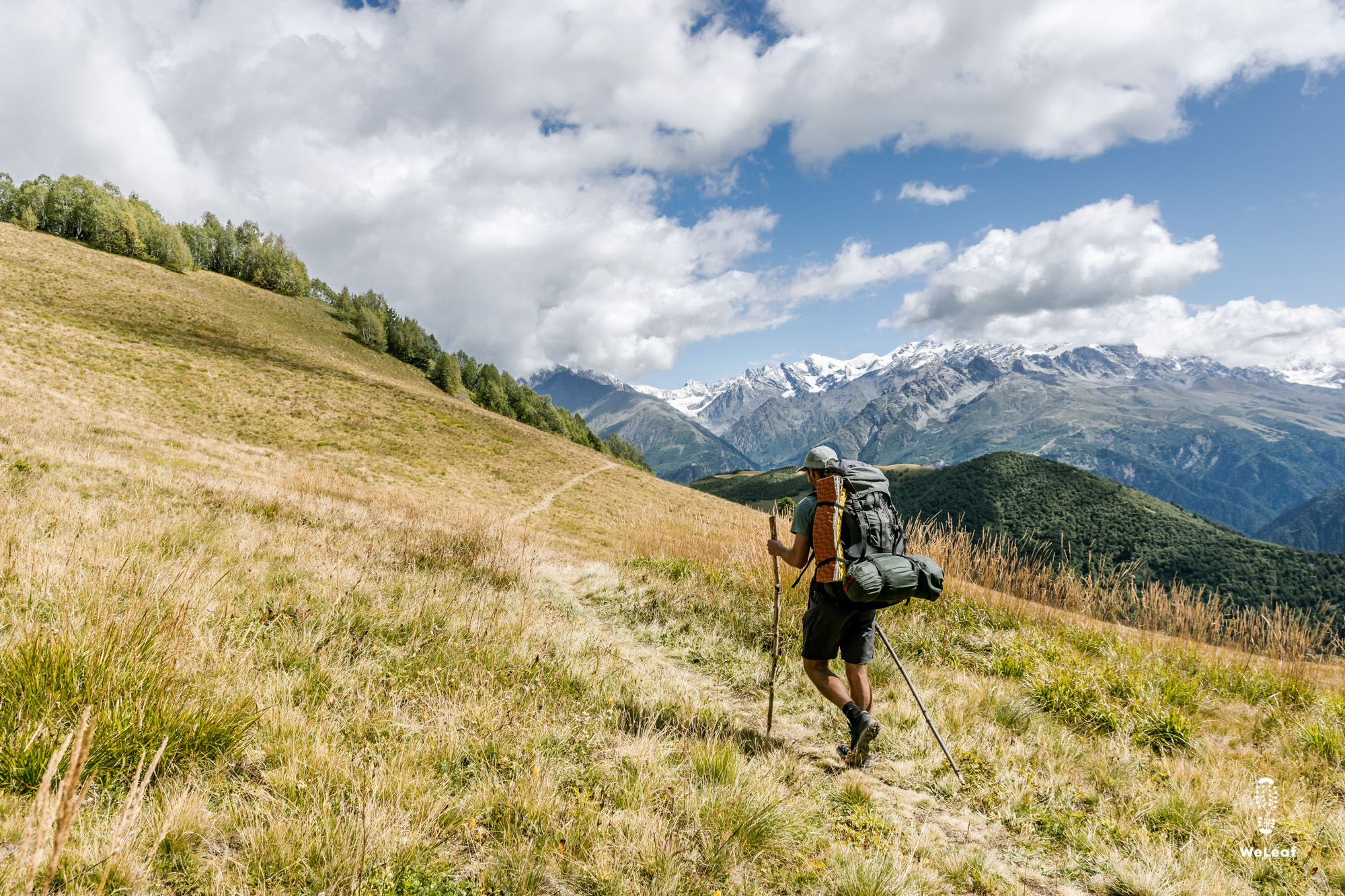
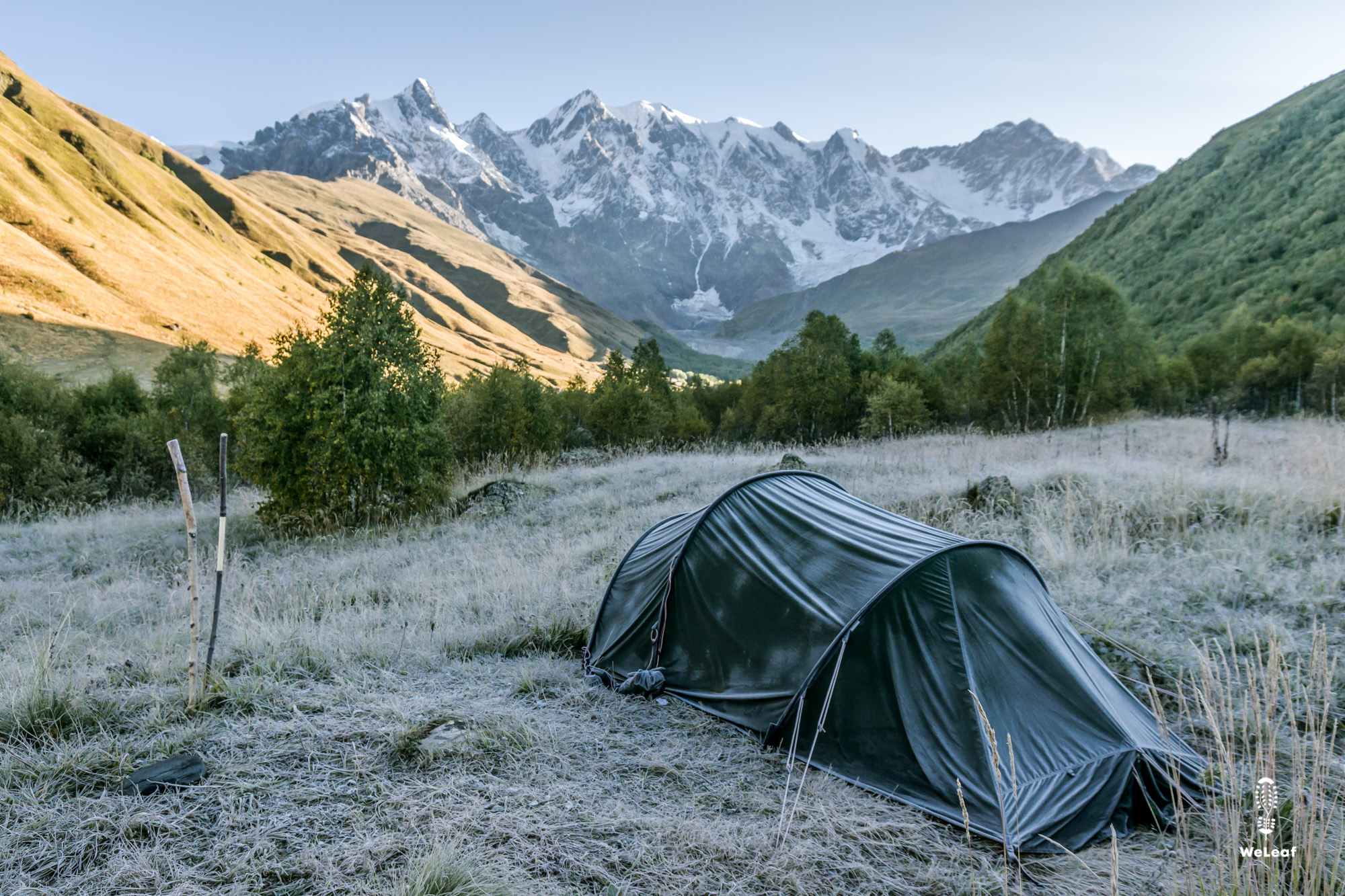
Jama jama
At the entrance of the village, there’s a small sign saying “market.” We follow the arrow and end up in front of an old house where a group of elderly men are sitting on a low wall. “Market,” one of them says, pointing toward the open door of the house. Through the front door, we can see straight into the living room. On the left stands a large fridge with some soft drinks and a rack with a few cookies. If this is what the local shops are like, finding food won’t be easy. Luckily, we still have enough for the next two days.
At the last house in the village, we see a man outside. We hold up our water bottles and say “water.” He lets us fill them at the garden hose by the flower bed. “Coffee?” he asks. Apologetically, we explain that we don’t drink coffee. We point to our route on the map, and he shakes his head for a moment. “Jama, jama,” he says, before disappearing inside. A few minutes later, he comes back out with a bag containing bread and cheese. “Madloba” — thank you — is one of the five words we actually know.
A dog lying by the door follows us as we head uphill, as if we’ve been given a local guide. The first part of the route follows a dirt road, but soon we try to find the hiking path. Luckily, we’re used to steep terrain — the forest behind our home in Norway has taught us a thing or two about making our own trails. We push through the undergrowth, climbing steep slopes and crossing tall grassy meadows. When we find a flat spot, we decide to pitch the tent. According to the navigation app, the trail passes right by our camp. With some imagination, we can see a faint track through the grass — though it could just as easily be a wildlife trail.
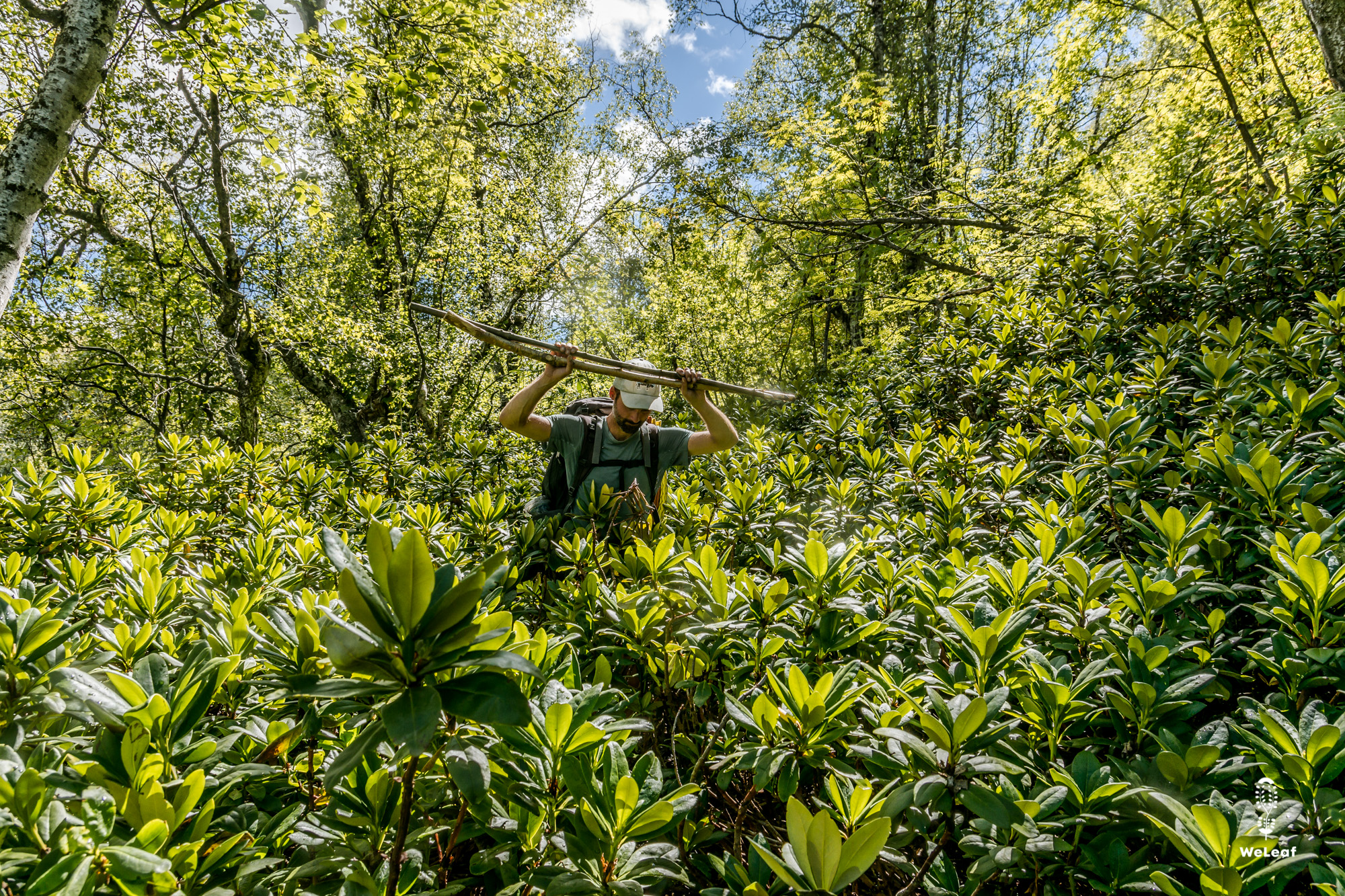
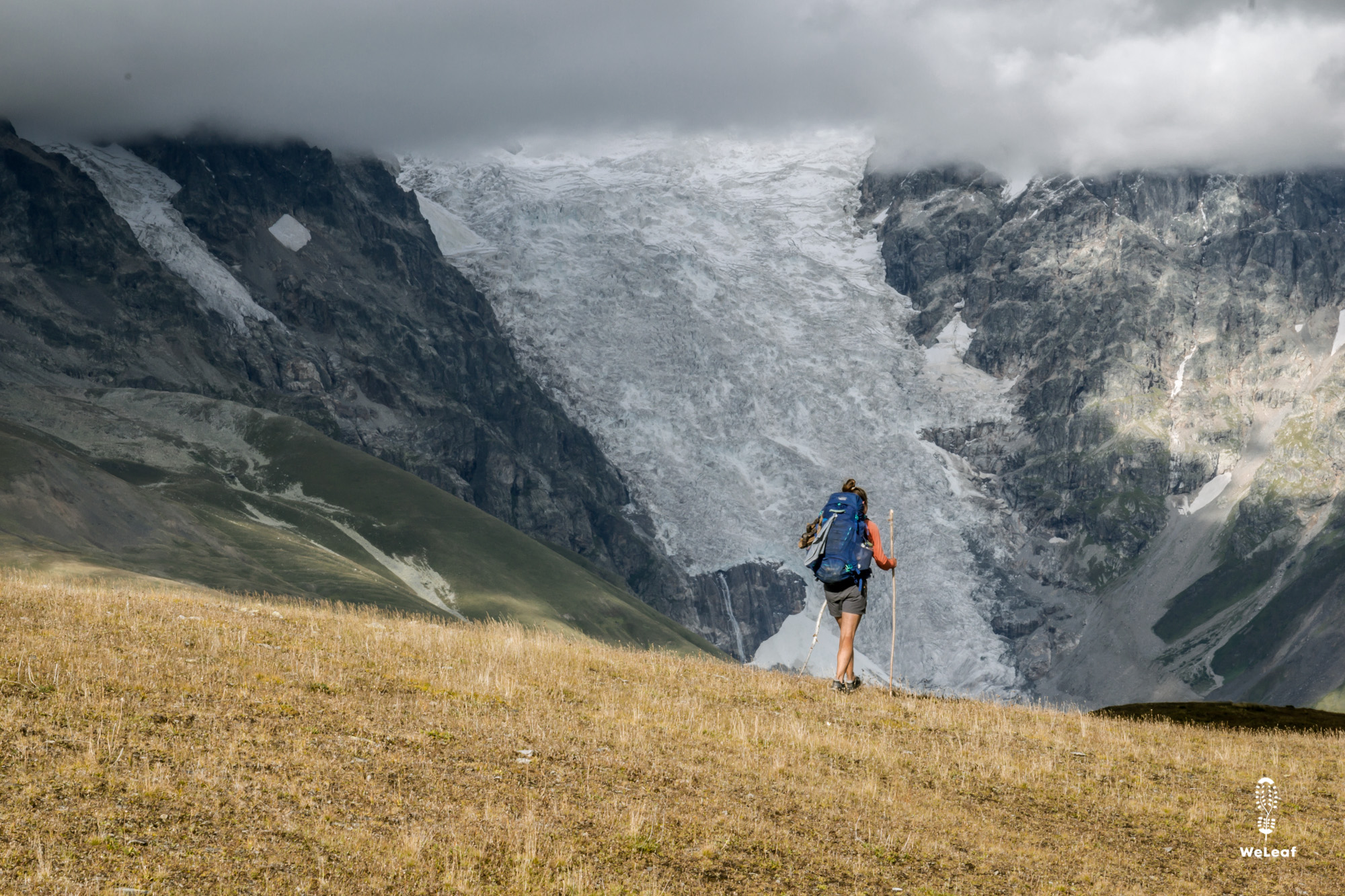
Endless
The next morning, the sky is a brilliant blue. In the distance, we see for the first time the twin peaks of Mount Ushba, the iconic mountain near Mestia. A thin layer of frost covers the tent; the grass is frozen stiff. The sun won’t reach our camp for a few more hours, so we pack everything up wet and start walking. After an hour, we’ll find a sunny spot to have breakfast and dry the tent. Walking through tall, wet grass, our “waterproof” shoes soak through instantly. Moisture seeps in through our socks. Remembering our own saying — “the fastest-drying clothes are bare skin” — we put on our sandals to keep the shoes dry. With freezing feet and hands, we set off, following the dotted line on our navigation app as best we can. Occasionally we see faint traces confirming we’re still on the right track.
We think the hardest part is behind us — until the rhododendrons begin. At the first bush we push through, we joke, “Not many hikers come this way.” By the fifth, it becomes, “We understand why no one comes here,” and eventually, “What are we doing here?” The thickets seem endless. Our legs are covered in scratches, and progress is painfully slow. After five hours, we finally emerge from the forest — only to find ourselves on the edge of a near-vertical drop strewn with loose rocks. Taking horses along this route would have been impossible. We’ve covered just 4.5 kilometers in five hours. But at last, we reach the high meadows where only grass grows. These are the landscapes we saw in photos — the ones that made us dream of trekking with horses. Our dream wasn’t entirely realistic in this terrain, but it’s something we could only learn by being here. We walk over 3,000-meter ridges, looking out at 5,000-meter snow-covered peaks and glaciers marking the border between Russia and Georgia.
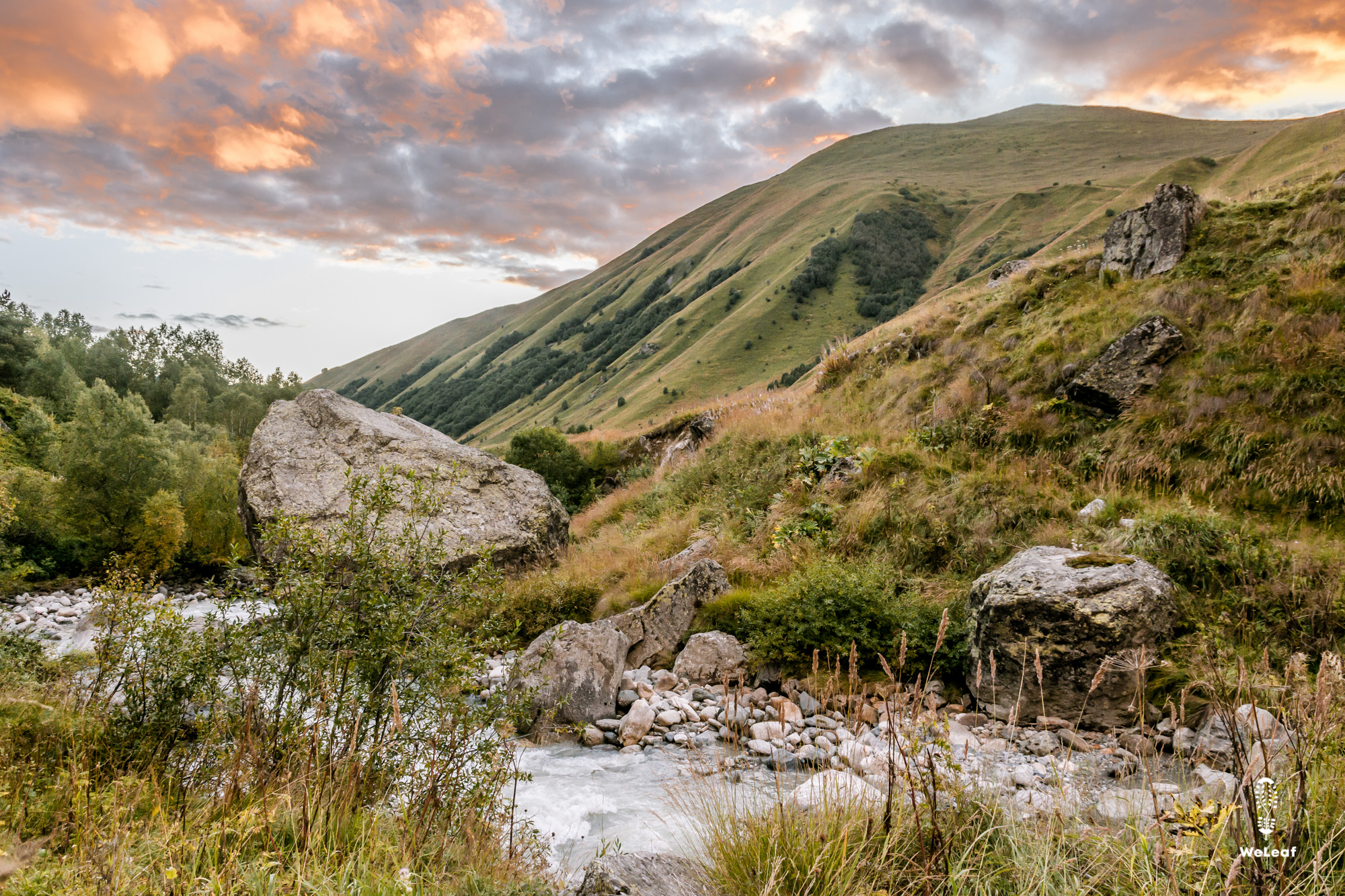
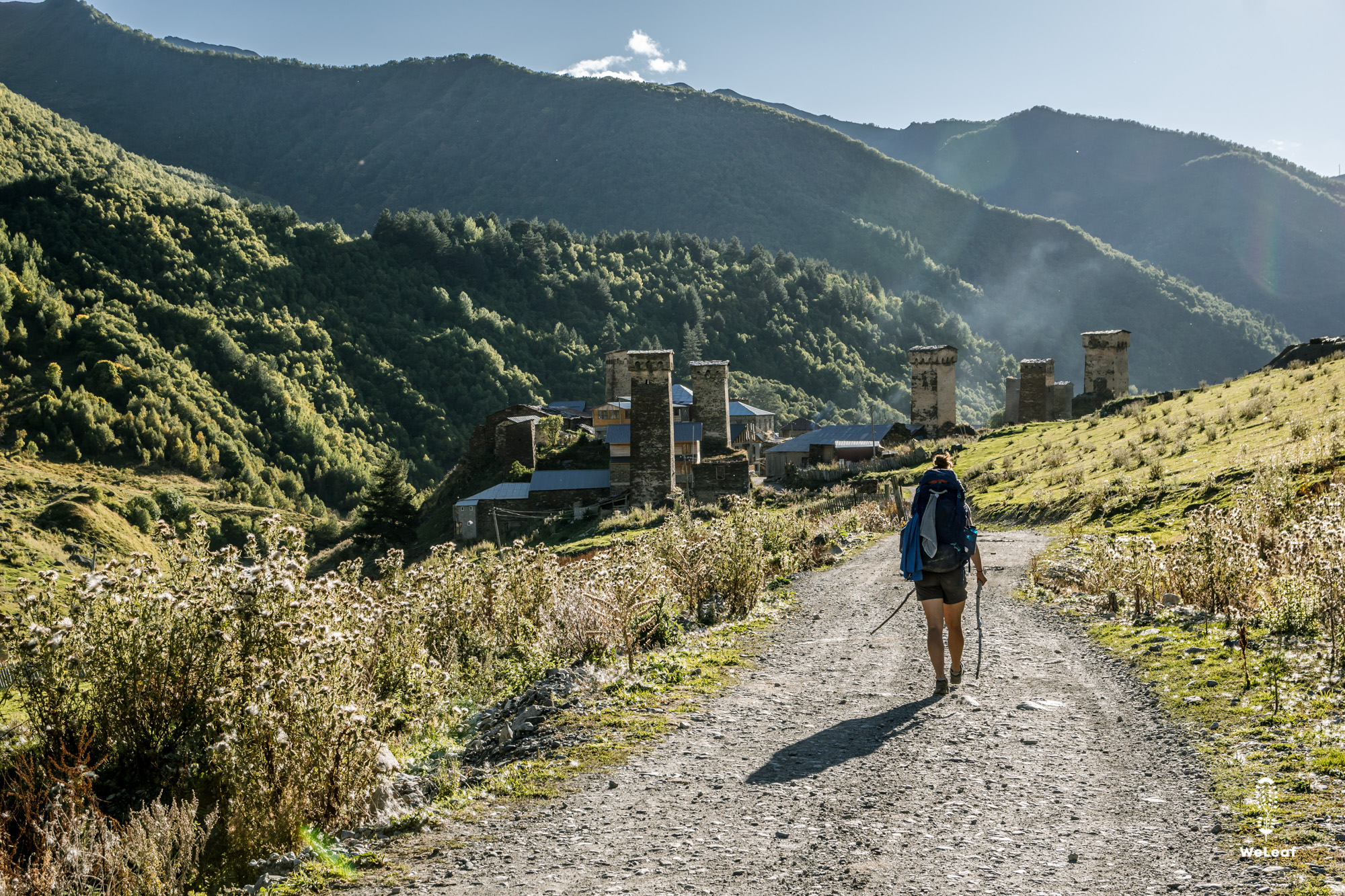
From the kitchen
Two days later, we reach the ultra-touristy village of Ushguli. It’s famous for its idyllic setting and the many stone towers that rise above the village. During times of war, these towers served as shelters — entire families would live inside for months. Today, the village has countless guesthouses and restaurants, but only one small shop. On the counter lie a few cookies and three tomatoes. The rest is beer and soft drinks — plenty for the average tourist, but not ideal for a mountain trek. Olivier asks if they have pasta, cream, and bread. The woman disappears into her kitchen and returns with two coffee cups filled with homemade cream, a plastic bag of pasta, and a loaf of her own baked bread. Together with our supply of oatmeal, the two tomatoes, and the lone aubergine we still have, we’ll make it to Mestia. More importantly, we’ve learned what to do when we can’t find food in stores.
"The woman disappears into her kitchen and returns with two coffee cups filled with homemade cream, a plastic bag of pasta, and a loaf of her own baked bread."

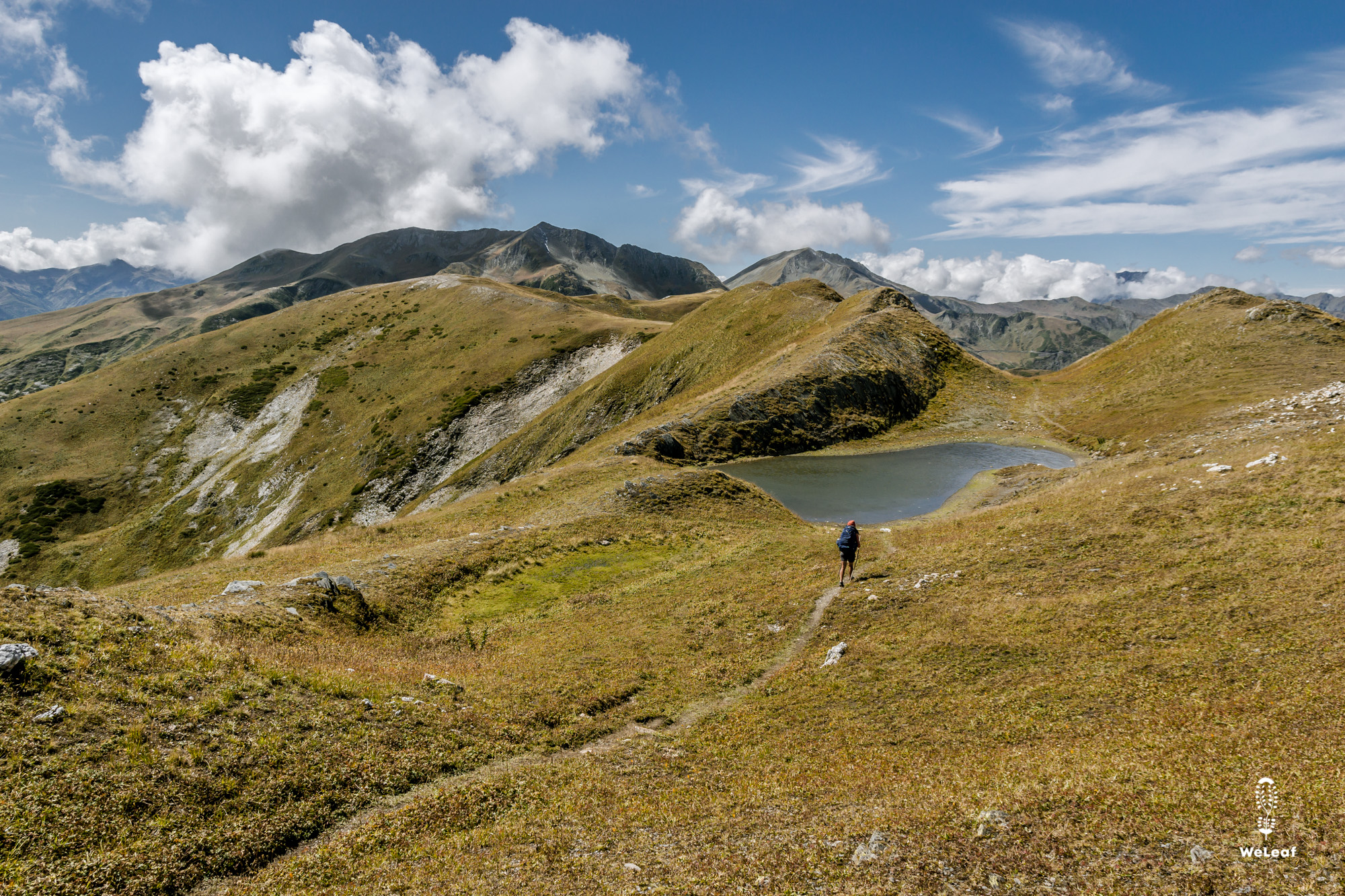
After Ushguli, we camp again at nearly 3,000 meters, treated to a stunning sunset. In the tent that evening, we hatch our next plan. This region has taught us what kind of landscape we’re really looking for when it comes to horse trekking. We read about a national park in southern Georgia where you can rent horses, and Zoë remembers the cave city of Vardzia near the Turkish border. What if we made that our next goal — to ride there on horseback? We check photos on Google Maps and study the elevation profiles. When we read the words “mountain steppe,” we know we’ve found it. Maybe we could have known this beforehand, or maybe it was meant to happen this way. There’s still some uncertainty — will reality live up to what we’ve read? But at least now, we have a new plan — and a new dream to ride toward.
